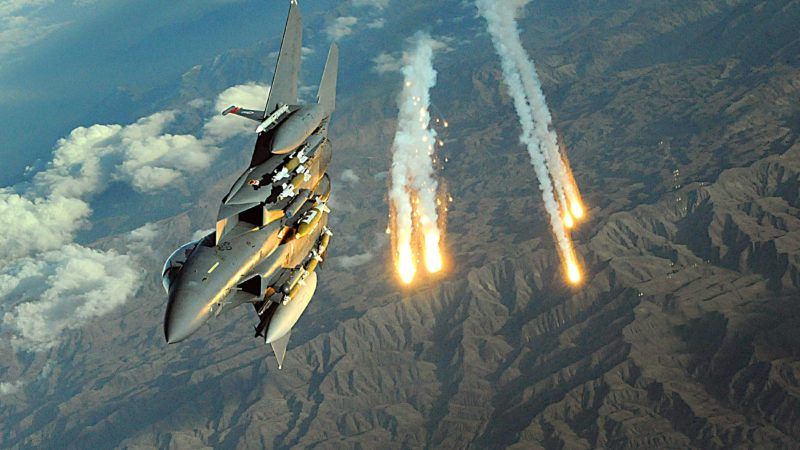America Dropped a Record Number of Bombs on Afghanistan Last Year
Civilian deaths are also on the rise, and it's increasingly obvious that there is no clear strategy for the U.S. to "win" its longest military conflict.

The United States dropped 7,423 bombs on Afghanistan last year—that's an average of more than 20 per day—narrowly surpassing the previous record set in 2018.
It's a statistic that belies the notion that President Donald Trump is an anti-war commander-in-chief, and one that suggests America is still no closer to winning its longest military conflict.
Trump has overseen a massive escalation in the amount of ordnance fired at Afghanistan in the past two years, according to a new report from the U.S Air Force. But other than blasting thousands of new craters in the war-torn country and terrorizing the people unfortunate enough to live there, there is little evidence that bombing the hell out of what's left of the country is accomplishing any vital U.S. interest. Amid the record-breaking year of attacks, the Trump administration was holding on-and-off peace talks with the Taliban—you know, the same group we went to war nearly two decades ago to remove—aimed at handing over control of the country.
Not all of those 7,423 weapons were "bombs" in the traditional sense of the word. The report counted various types of ordnance, including missile strikes, large-caliber (105mm or greater) shells fired by combat aircraft, and strafing fire from 20mm cannons. U.S. and other coalition aircraft flew more than 8,800 missions in Afghanistan last year, and more than a quarter of those missions resulted in the firing of munitions, according to the Air Force report.
Still, it is perhaps unsurprising that the escalation in the number of explosive weapons fired at Afghanistan has coincided with an escalation in civilian deaths there. In 2018, when the U.S. dropped a then-record 7,362 bombs on the country, the United Nations documented 3,804 civilian deaths caused by ongoing conflicts in the country. About a quarter of those deaths were attributed to "pro-government forces," including Afghan national security forces, international military forces, and other pro-government militias.
Full data for 2019 has yet to be released by the United Nations. But through October of last year it looked like Afghanistan was on pace for its bloodiest year since at least 2009. Already in 2020, at least 15 civilians were killed by a U.S. airstrike in western Afghanistan.
It's true that most of the civilian deaths in Afghanistan are the result of terrorism and militia attacks, but it's equally true that the increase in U.S. bombing is not making Afghans any safer—in fact, it seems to be contributing to an overall escalation in violence.
Trump has also escalated the Afghanistan conflict in other ways. In 2017, he increased the numbers of troops deployed there by 3,000 in an attempt to finally "win" the war. But just like his predecessor—President Barack Obama hiked Afghanistan deployments by nearly 30,000 in 2010—Trump's attempt to break the quagmire in Central Asia has led to more bloodshed but little success.
And now the Trump administration does not even appear willing to explain its Afghanistan strategy to Congress. Defense Secretary Mark Esper and Secretary of State Mike Pompeo refused to appear at a congressional hearing this week in which lawmakers grappled with the "Afghanistan Papers" published in December by The Washington Post. The Post's document dump showed that the Pentagon has been lying for years about the status of the war in Afghanistan, while top military brass have privately concluded that the U.S. has no clear strategy or path to victory.
Trump came into office promising to end America's wasteful post-9/11 wars. He's so far squandered his opportunity to do so.
Withdrawing from Afghanistan without a clear strategy for the country's future might invite chaos. Still, it's hard to argue that it would be any less productive for U.S. interests than the Trump administration's current "pray-and-spray" approach, which is saturating the country with explosives and blood but seems to be accomplishing little else.


Show Comments (86)